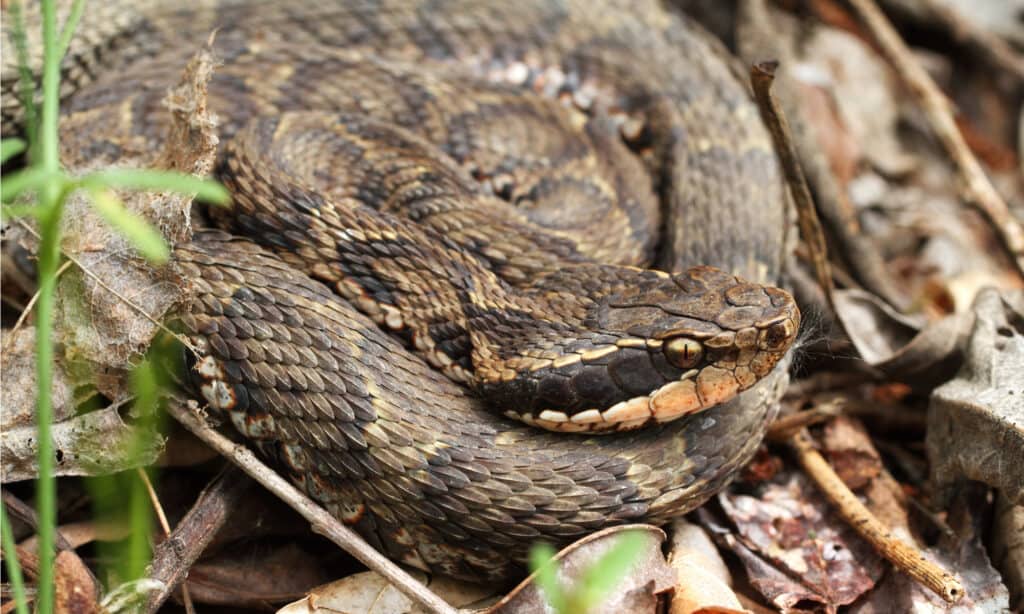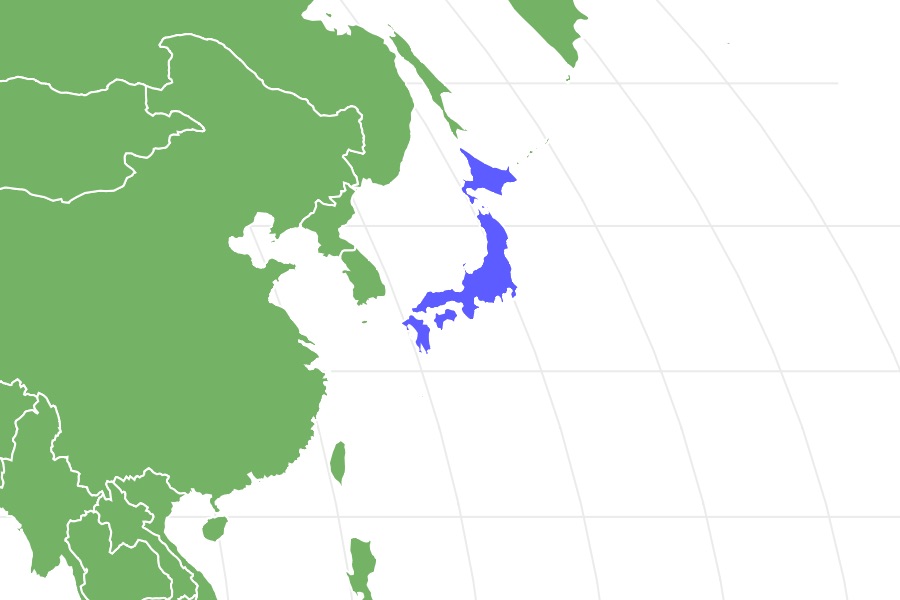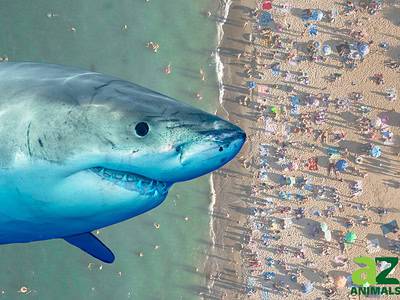Mamushi Snake
Gloydius blomhoffii
The Mamushi snake, which is also known as the Japanese moccasin or the Japanese pit viper, can grow to be over two feet long.
Advertisement
Mamushi Snake Scientific Classification
- Kingdom
- Animalia
- Phylum
- Chordata
- Class
- Reptilia
- Order
- Squamata
- Family
- Viperidae
- Genus
- Gloydius
- Scientific Name
- Gloydius blomhoffii
Read our Complete Guide to Classification of Animals.
Mamushi Snake Conservation Status
Mamushi Snake Facts
- Prey
- Rodents, small birds, lizards, and insects
- Group Behavior
- Solitary
- Fun Fact
- The Mamushi snake, which is also known as the Japanese moccasin or the Japanese pit viper, can grow to be over two feet long.
Mamushi Snake Physical Characteristics
- Color
- Brown
- Grey
- Lifespan
- 14 years
- Length
- 12-25 inches
- Venomous
- Yes
- Aggression
- Medium
View all of the Mamushi Snake images!
The Mamushi snake, which is also known as the Japanese moccasin or the Japanese pit viper, can grow to be over two feet long.
With its blotchy pattern, this snake remains concealed from its prey so it can ambush them when they least expect it. One of the most well-known facts about this species is its lethality, killing just under a dozen people a year with its venom.
5 Amazing Mamushi Snake Facts
Here are a few facts about the Mamushi snake.
- The only other snakes that compare to the venomous Mamushi snake in Japan are the yamakagashi and the Okinawan habu.
- About 2,000 or more are bitten by the Mamushi snake every year. About 10 people die from these snake bites, though there is an antivenom available. Treatment is needed for nearly any bite.
- The most commonly bitten areas of the body are fingers and toes.
- As an ambush predator, the typical diet of the Mamushi snake consists of rodents, lizards, insects, small birds, and similar animals. That’s why the natural habitat tends to be near farmland with the high population of rodents.
- The meaning of “Mamushi” comes from the word “kanji” which means “pit viper” in Japanese.
Where to Find Mamushi Snakes
Mamushi snakes are native to Japan. While there are reportedly sightings beyond, there’s currently no proof that it can be found in the Ryukyu Islands. This species is adaptable and they can live almost anywhere in this region. They like swamps and marshes as much as they enjoy rocky hillsides. They’ll even live in open woodlands and meadows, giving them many ways to preserve their solitude away from people.
Mamushi Snake Scientific Name
The Mamushi snake is known by many names, including the Japanese moccasin, Japanese pit viper, and Qichun snake. It’s scientific name is Gloydius blomhoffii, which honors the director of a trading colony in Japan in the early 1800s named Jan Cock Blomhoff.
Its class is Reptilia, and it belongs to the Viperidae family. It previously was thought to have four subspecies. However, reclassification of these species has led researchers to decide that this species is the only one.
Mamushi Snake Population & Conservation Status
The Mamushi snake is the most common species in all of Japan, though their population is not known. The IUCN Redlist considers them to be of Least Concern with a stable population, and their typical habitat keeps them as close to their food source as possible.
How to Identify Mamushi Snake: Appearance and Description

Japanese pit viper
©23frogger/Shutterstock.com
The size of the Mamushi snake ranges from 12 to 25 inches, though the biggest one to ever be recorded was 36 inches long. Their body is thick, though it narrows towards the end of the tail. This viper comes in many colors, including pale gray, reddish-brown, and yellow-brown. To break up the solid background, lateral blotches in a variety of shapes. Typically, the blotches separate from the background in black, but the center is lighter. The head has a different color from the rest of the body, usually dark brown or black. The sides of the head are paler.
How to identify a Mamushi Snake:
– Pal gray, reddish-brown, or yellow-brown body with irregular blotches.
– Tail that tapers towards the end of the body.
– Darker head.
– Up to 25 inches long.
Mamushi Snake Venom: How Dangerous Are They?
The Mamushi snake is incredibly dangerous and venomous, though it is primarily found in Japan. As an ambush predator, they tend to go after fingers and toes, and the onset of the venom causes severe swelling. This swelling can lead to other issues, like the compression of nearby arteries. The venom is highly potent, releasing two neurotoxins.
If you are bitten by a Mamushi snake, you need to seek medical attention right away. The only treatment is an antivenom, which is primarily produced in Japan and China. Considering that over 2,000 people are bitten by this snake species annually, the after-care is important. Even with antivenom, some bites require you to be admitted to intensive care. Even with all of the right actions, there are multiple reports of kidney failure and changes in vision. About 10 snake bite victims die annually as the result of this venom, and it can cause miscarriage during pregnancy.
On average, the recovery time can take a week of in-patient treatment or a month of out-patient treatment.
Mamushi Snake Behavior and Humans
For the most part, Mamushi snakes stay away from humans. They are rather solitary, even within their species, and they only usually are found together if they are mating. However, if a human manages to be in the same place at the same time, they become incredibly aggressive to keep by itself.
Similar Animals
View all 164 animals that start with MMamushi Snake FAQs (Frequently Asked Questions)
Is the Mamushi snake poisonous?
Absolutely. The venom is highly poisonous. Statistically, up to ten people die from Mamushi snake bites each year. It is comprised of neurotoxins and anticoagulants, making it much like the venom released by the beaded lizard of North America.
What does the Mamushi snake eat?
The diet of the Mamushi snake consists primarily of small mammals (like rodents), frogs, and small birds. They will, on occasion, eat lizards and insects as well, acting as ambush predators at any time of day while they hunt.
What is the scientific name for the Mamushi snake?
The scientific name of the Mamushi snake is Gloydius blomhoffii. It is known by many names, including the Japanese moccasin, Japanese pit viper, Qichun snake, and the Salmusa Mamushi. Though researchers thought there were four subspecies at one time, they are now considered their own species.
What does Mamushi mean in Japanese?
The meaning of the word “Mamushi” is “pit viper.” Rather than having a hidden meaning, this Japanese viper was named for Jan Cock Blomhoff.
How big do Mamushi snakes get?
The typical length of a Mamushi snake is 12-25 inches.
Thank you for reading! Have some feedback for us? Contact the AZ Animals editorial team.















